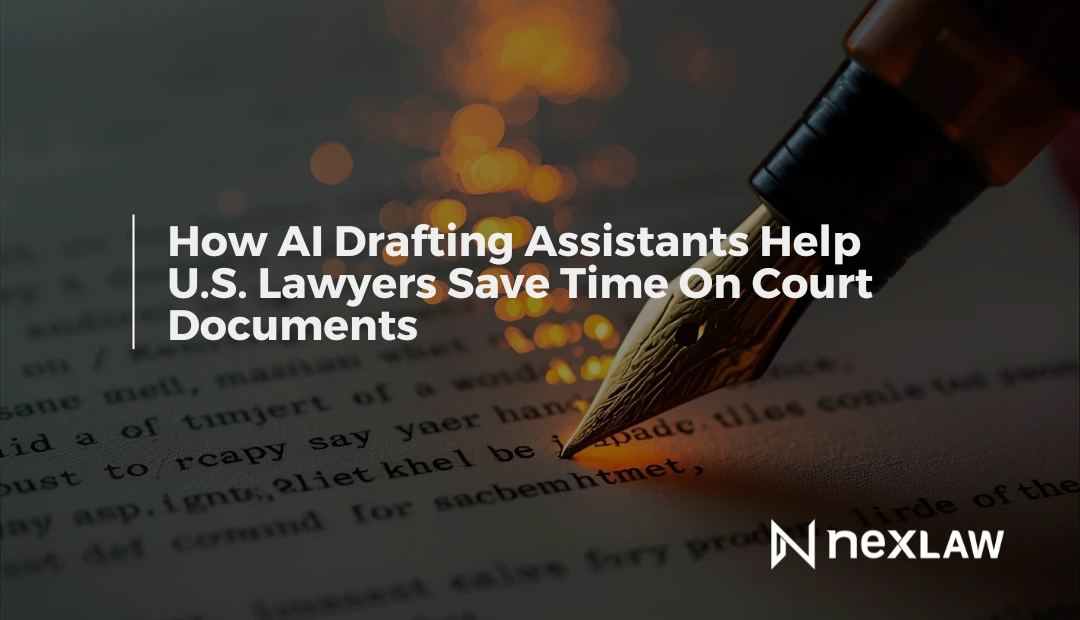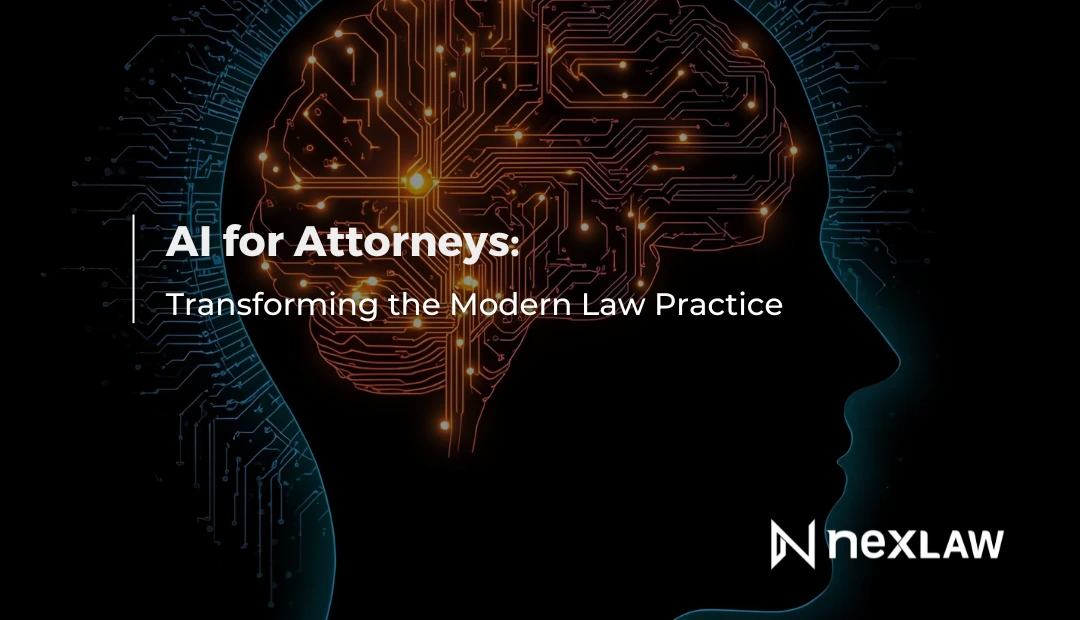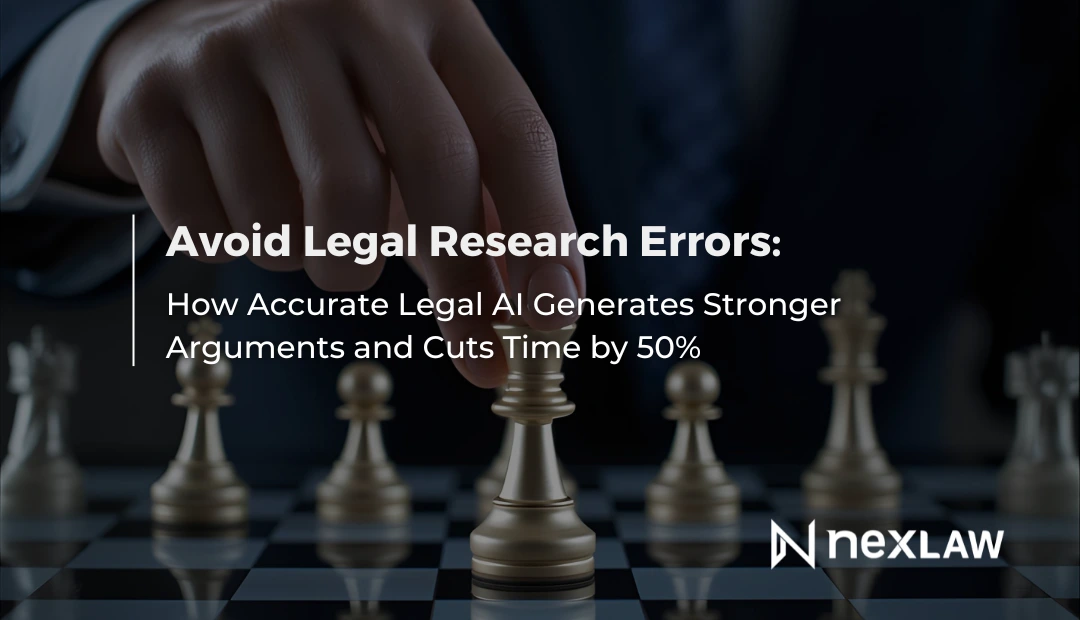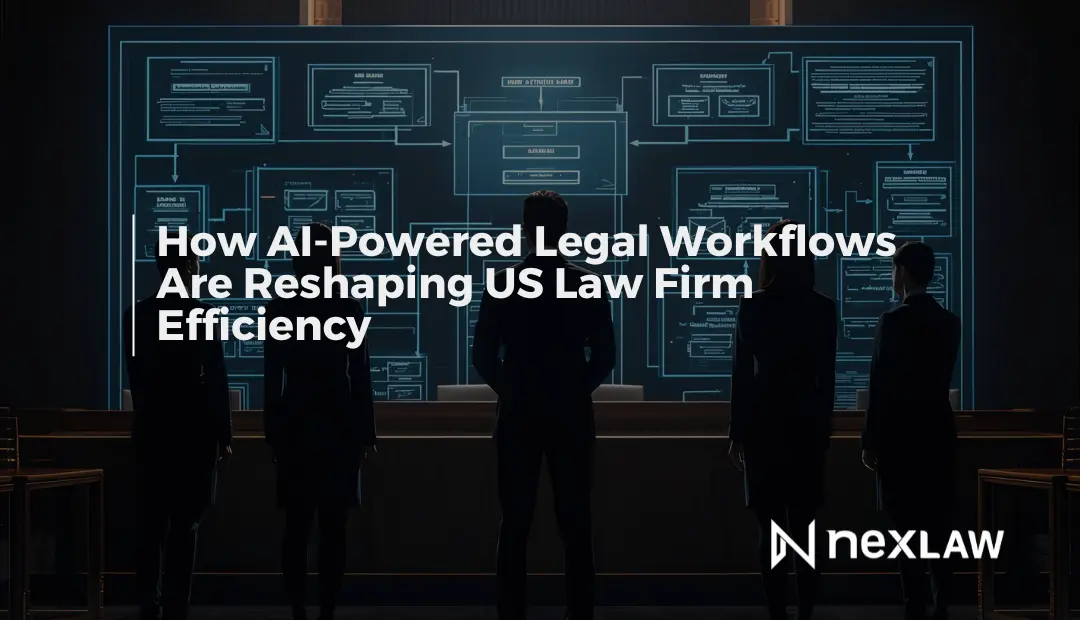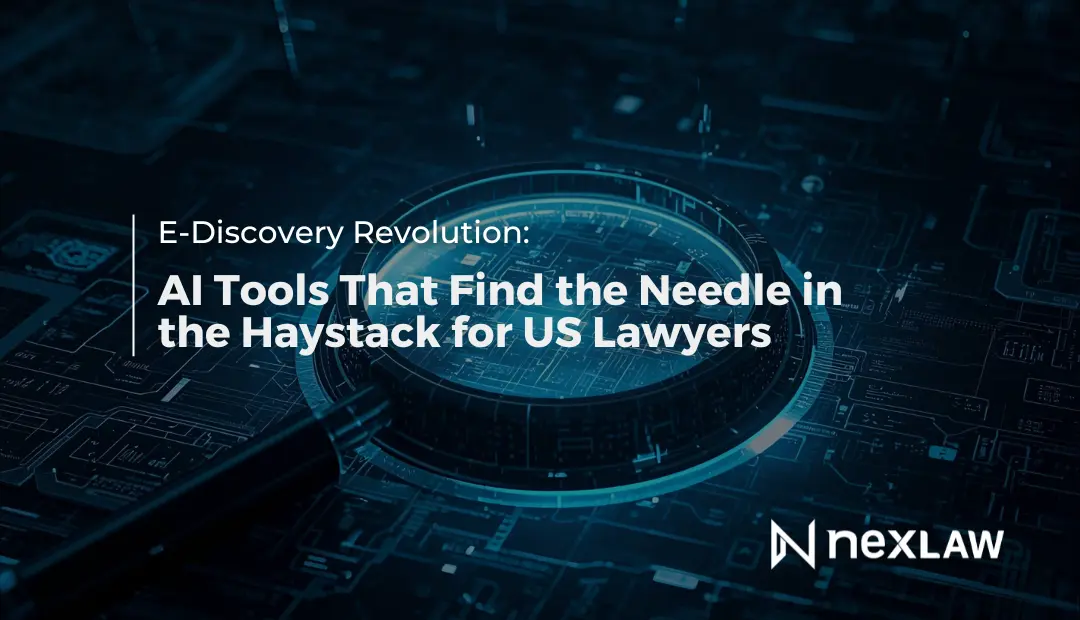How AI Drafting Assistants Help U.S. Lawyers Save Time On Court Documents
Litigation work is demanding. Lawyers and paralegals manage heavy caseloads, fast-moving deadlines, and exacting standards for filings and formatting. Law firms must deliver quality and consistency while staying mindful of budgets and client expectations. In this environment, starting every motion, brief, or discovery response from a blank page is rarely the best use of time.
Unlock Legal Insights Instantly!
AI drafting tools offer a practical way to begin with a stronger first draft and reserve human focus for strategy and judgment. The goal is not to replace lawyers. The goal is to give legal teams a head start on well-structured documents that they can refine, fact-check, and finalize with professional care.
Where AI Drafting Tools Typically Save Time
Court documents are highly structured, yet every matter is unique. Good AI drafting assistants help legal professionals move faster on repeatable steps and stay precise on the parts that require careful legal reasoning.
Common time saves include:
- Starting structure
Generating a clear outline for motions, responses, and briefs so lawyers can focus on argument rather than scaffolding. - First-pass language
Producing a workable first draft that attorneys and paralegals can edit for tone, authority, and case-specific facts. - Citation support
Assisting with insertion and organization of authorities and signaling items that warrant verification by counsel. - Consistency checks
Helping catch missing sections, mislabeled exhibits, numbering issues, and formatting problems that slow down filing. - Reusable components
Making it easier to adapt recurring sections across matters while maintaining firm style guidance and preferences.
The result is a shift from building documents line by line to reviewing, improving, and tailoring drafts with professional judgment.
Speed With Oversight
Headlines have made everyone aware that AI outputs must be reviewed. Courts expect accurate citations and real authorities, and clients expect work product that reflects legal expertise and ethical care. The best use of AI in drafting is a human-in-the-loop approach. Lawyers and paralegals remain the decision makers. AI assists with structure and speed, while people confirm substance and strategy.
Practical safeguards legal teams often use:
- Verify every citation and quotation against trusted legal research databases.
- Review each legal proposition for fit with jurisdiction, venue, and procedural posture.
- Confirm that facts, dates, parties, and record cites match the file.
- Document internal review before filing or service.
This workflow keeps the benefits of efficiency while preserving accuracy and professional responsibility.
What Types Of Drafting Tools Are Available
Not all tools aim at the same problems. Understanding the landscape helps law firms pick the right fit.
- General AI writing tools
Useful for brainstorming and plain-language summaries. They are not designed for court-ready drafts and require careful oversight for legal use. - Template or document-automation software
Helpful when the content is stable, like standard forms or contracts. Less helpful for litigation documents that require nuanced argument and persuasive structure. - Legal-specific AI drafting assistants
Built for lawyers and paralegals. These tools focus on court-style structure, authority insertion workflows, and litigation-oriented language that professionals can refine.
Why Many Litigators Choose A Legal-Focused Assistant
Litigation drafting has special requirements. Law firms and solo practitioners need tools that respect the realities of U.S. courts and typical law-office workflows. That is where NexLaw | Your AI Legal Assistant concentrates its value.
What sets NexLaw apart:
- Litigation-first experience
Workflows tailored to motions, briefs, discovery responses, and trial-prep documents. The assistant helps with structure and language lawyers can edit and finalize. - Authority-aware workflows
Drafting support that encourages proper citation handling and review. Lawyers remain in control of verification and final decisions. - Formatting support
Assistance with headings, numbering, tables, and exhibit references that align with common U.S. litigation practices. Attorneys and paralegals retain final formatting control for the specific court. - Guidance for different users
Lawyers and paralegals use advanced drafting features to accelerate professional work. Pro se litigants can access guided steps that help them avoid common pitfalls, all while encouraging careful review before filing.
NexLaw focuses on reliability and gives legal professionals the tools to move faster without compromising judgment or ethics.
Benefits For Law Firms, Lawyers, Paralegals, And Pro Se Litigants
Law firms and managing partners
- Improve team throughput without sacrificing quality.
- Standardize drafting approaches across matters and practice groups.
- Support associate training with structured, reviewable drafts.
Litigation attorneys and trial lawyers
- Spend less time on clerical drafting steps and more on argument.
- Keep attention on strategy, client counseling, and negotiation.
- Reduce last-minute scrambles by starting earlier with a viable draft.
Paralegals and litigation support
- Generate first passes for routine sections and check for missing elements.
- Maintain document consistency across exhibits, attachments, and references.
- Collaborate more efficiently with attorneys on revisions and citations.
Pro se litigants
- Follow guided drafting prompts written in plain English.
- Produce cleaner documents and reduce avoidable errors.
- Better understand what courts typically expect to see in filings.
A Practical, Ethical Drafting Workflow With AI
A responsible process is straightforward and helps teams file with confidence:
- Start with a clear prompt
Identify jurisdiction, document type, key issues, and the relief sought so the initial draft aligns with the matter. - Generate a first draft
Use NexLaw to create a structured document with placeholders where attorney analysis or record cites are needed. - Insert and verify authorities
Add the cases, statutes, and rules you intend to rely on. Check each citation and quotation against trusted databases before finalizing. - Tailor the argument Ensure the draft reflects the facts, posture, and tone appropriate to the client and the court.
- Run quality checks
Confirm headings, numbering, exhibits, defined terms, and certificate sections are consistent. - Document review
Keep a simple internal note or checklist that a lawyer reviewed and approved the draft prior to filing.
This workflow keeps AI in its proper lane and supports a clean, court-ready result.
Use Cases That Fit AI Drafting Especially Well
- Motions with recurring frameworks
Motions to dismiss, summary judgment, discovery motions, and related filings often benefit from AI-assisted structure. - Discovery responses and meet-and-confer letters
Standard sections can be generated quickly, then tailored to the dispute and local rules. - Short briefs and supporting filings
Statements of issues, background sections, and proposed orders often follow familiar patterns where AI can save time. - Internal work product
Research summaries, outline drafts, and talking points for client updates or hearings can be created quickly and refined by the team.
Why Reliability Matters As Much As Speed
Saving time is only meaningful if the result is dependable. NexLaw focuses on workflows that help lawyers and paralegals produce clean drafts while staying aligned with professional responsibility. That includes encouraging verification of authorities, supporting consistent formatting, and keeping human review at the center of the process.
For firms that bill hourly, this approach reduces low-value busywork and directs more time to strategy. For firms using alternative fee arrangements, it helps manage scope and timelines. For solos and small firms, it provides a scalable way to compete on quality and responsiveness.
Choosing The Best AI Drafting Assistant For U.S. Litigants
When evaluating tools for your law firm, consider:
- Litigation specificity
Does the assistant support the types of filings you handle most often? - Editorial control
Can your team easily revise, redline, and apply firm style guidance? - Citation and formatting support
Does the tool encourage good habits around authority handling and document structure? - Security and confidentiality
Does the platform align with your expectations for protecting privileged information? - Onboarding and training
Can associates and paralegals become productive quickly, and does the workflow fit your current process?
NexLaw is designed with these evaluation points in mind so teams can adopt AI without disrupting quality or oversight.
The Bottom Line
AI drafting tools have become one of the most practical ways for litigators to modernize workflow. They help lawyers and paralegals start stronger, review faster, and file with greater consistency. The most effective approach keeps people in control and uses AI to accelerate the parts of drafting that do not require legal judgment.
NexLaw | Your AI Legal Assistant focuses on that balance of speed and reliability. It supports attorneys, paralegals, and even pro se litigants with litigation-ready drafting assistance that respects the standards of U.S. practice and the realities of court deadlines.
Lawyers who embrace AI today are shaping the legal profession of tomorrow. Whether you’re part of a litigation team, a solo attorney, or a paralegal eager to expand your role, NexLaw makes it possible.
NexLaw is designed to help paralegals and attorneys—solo or from small and mid-size—prepare cases more efficiently, with greater accuracy and strategic insight.
Book a Guided Demo — See how NexLaw fits seamlessly into your practice and transforms your workflows.
Start a Free 3-Day Trial — Explore NexLaw risk-free and experience firsthand how AI can enhance efficiency, accuracy, and client satisfaction.
*t&c applied | visit our website for more details
With NexLaw, the future of litigation is here - AI-powered, accurate, and accessible.
